Ultimate Everest - The #1 Guide Service to Everest Base Camp
Everest & Annapurna Treks
Nepal is the ultimate destination for spectacular mountain trekking in one of the world's most beautiful, cultural diverse places. Truly a unique region, the Himalayas of Nepal boasts eight of the top ten highest summits including Mount Everest, the tallest mountain in the world, which stands at 29,028 feet high.
Everest Base Camp is an iconic trek. The route has the reputation of being the grandest walk in the land of the Himalayas. Ultimate Expeditions® offers a 14 day Everest Base Camp trip, a great choice for travelers who wish to visit Everest Base Camp in a short time. Those who are physically fit, in good health, and have a sense of adventure can sign up for this two-week long trek.
Some who might want a more challenging trek along with a desire to get off the beaten path can embark on our 17 day Everest Base Camp trip via Gokyo Lakes. And for those who want even more excitement, we offer the 20 day Everest Base Camp trip plus a summit of the 20,252 ft. Island Peak.
In addition, Ultimate Expeditions® leads adventurers on treks in the equally stunning Annapurna, Langtang and Manaslu regions.
We invite you to explore our site for the most complete and accurate information on Everest Base Camp trekking and other Himalayan adventures.
 |
Mount Everest Quick Facts |  |
|
| Height: | 29,028 feet | ||
| EBC Height: | 17,585 feet | ||
| Size: | 91,120 sq miles (236,000 sq kms) | ||
| Location: | Nepal, Tibet border | ||
| Range: | Himalaya | ||
| Nearby Cities: | Kathmandu | ||
| Nearby Airport: | Lukla Airport | ||
 |
 |
||
 |
Nepal Quick Facts |  |
|
| Population: | 27.47 million | ||
| Capital: | Kathmandu | ||
| Size: | 140,800 square km | ||
| GNP: | $27 billion | ||
| Religions: | Hindi, Buddhist, Muslim | ||
| Languages: | Nepali, English, other dialects | ||
| Currency: | Nepalese Rupee (1 USD = 99 NR 3/15/2015) | ||
| Time Zone: | GMT + 4.75 hrs | ||
| Voltage: | 230V, Plugs C&D | ||
 |
 |
||
The Ultimate Nepal Experience
What makes Ultimate Expeditions® the best choice for Everest Base Camp and Annapurna trekking?
-
-
EXPERT GUIDES
- • Hand selected, licensed local Nepalese guides including Mount Everest summit veterans
- • More than 100 years of combined experience
- • Over 5,000 clients led on Himalayan expeditions
- • Follow all Nepal Mountaineering Assoc. standards
-
QUALITY STANDARDS
- • High quality accommodations in Kathmandu
- • Rough, but functional lodges during trek
- • Varied meals made from fresh, local ingredients
- • Clean, filtered water and other beverages
-
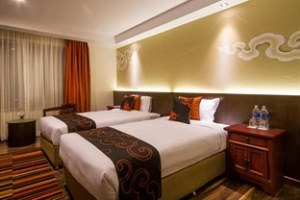
-
-
SAFETY FOCUSED
- • Skilled in treatment of injury and altitude sickness
- • Perform daily health checks on climbers
- • Monitor oxygen saturation levels & heart rate
- • Trained in first aid & mountain rescue
- • Emergency oxygen carried on all peak climbs
-
HAPPY CUSTOMERS
- • "Excellent experience!"
- • "True professionals"
- • "Organized perfectly"
- • "So wonderful"
- • "Highly recommended!
-
-
-
EXPERT GUIDES
- • Hand selected, licensed local Nepalese guides including Mount Everest summit veterans
- • More than 100 years of combined experience
- • Over 5,000 clients led on Himalayan expeditions
- • Follow all Nepal Mountaineering Assoc. standards
-

-
QUALITY STANDARDS
- • High quality accommodations in Kathmandu
- • Rough, but functional lodges during trek
- • Varied meals made from fresh, local ingredients
- • Clean, filtered water and other beverages
-
-
SAFETY FOCUSED
- • Skilled in treatment of injury and altitude sickness
- • Perform daily health checks on climbers
- • Monitor oxygen saturation levels & heart rate
- • Trained in first aid & mountain rescue
- • Emergency oxygen carried on all peak climbs
-
-
HAPPY CUSTOMERS
- • "Excellent experience!"
- • "True professionals"
- • "Organized perfectly"
- • "So wonderful"
- • "Highly recommended!
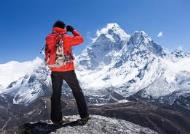 |
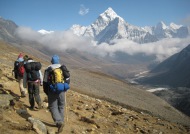 |
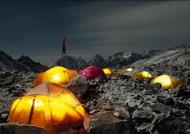 | |||
| Classic Everest Base Camp | Everest BC via Gokyo Lakes | Everest BC + Island Peak | |||
| Trip Length: 14 days | Trip Length: 17 days | Trip Length: 20 days | |||
| Operates: Sep 1 - May 31 | Operates: Sep 1 - Jan 15, Feb 16 - May 31 |
Operates: Sep 1- Nov 20, Mar 11 - May 31 |
|||
Experience one of the world’s great iconic treks. The classic Everest Base Camp trek is an obtainable, but tough, physical challenge that offers amazing views and a rich cultural journey. This adventure should be on everyone's bucket list. |
The Gokyo route to Everest Base Camp is our favorite. This trek escapes the crowds that favor the main route, includes a fantastic ascent of Gokyo Ri and crosses the Cho La pass. This trip is highly recommended! |
Looking for a real expedition? In addition to Everest Base Camp and Kala Pattar, this trek includes an exhilarating summit of Island Peak, at 20,252 ft (6,173m). This is a challenging trip, but also very rewarding one. |
|||
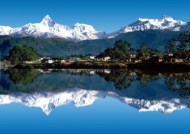 |
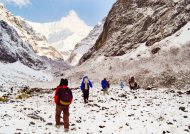 |
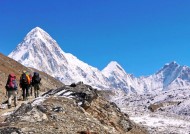 | |||
| Royal Annapurna | Annapurna Sanctuary | Annapurna Circuit | |||
| Trip Length: 7 days | Trip Length: 12 days | Trip Length: 14-18 days | |||
| Operates: All Year | Operates: All Year | Operates: Aug 15 - Jan 15, Feb 16 - May 31 |
|||
Royal Annapurna is perfect for beginners or as a family adventure. Packed with beautiful scenic views, this wondrous trekking experience will take you through the foothills just north of the Pokhara Valley and ends at the beautiful Begnas Lake. |
Annapurna Sanctuary is an amazing trek into the heart of the Himalayas. Enjoy spectacular scenery of Machhapuchre, Dhaulagiri, Nilgiri, and the Annapurnas. Visits Machhapuchre and Annapurna Base Camp. |
Embark on one of the world's most famous treks - the Annapurna Circuit. Highlights of this trip include the crossing of Thorung La pass at 17,769 feet (5,416 m) and a stunning sunrise view from Poon Hill. Remarkable! |
|||

Classic Everest Base Camp
Trip Length: 14 days
Operates: Sep 1 - May 31
Experience one of the world’s great iconic treks. The classic Everest Base Camp trek is an obtainable, but tough, physical challenge that offers amazing views and a rich cultural journey. This adventure should be on everyone's bucket list.

Everest BC via Gokyo Lakes
Trip Length: 17 days
Operates: Sep 1 - Jan 15, Feb 16 - May 31
The Gokyo route to Everest Base Camp is our favorite. This trek escapes the crowds that favor the main route, includes a fantastic ascent of Gokyo Ri and crosses the Cho La pass. This trip is highly recommended!

Everest BC + Island Peak
Trip Length: 20 days
Operates: Sep 1- Nov 20,Mar 11 - May 31
Looking for a real expedition? In addition to Everest Base Camp and Kala Pattar, this trek includes an exhilarating summit of Island Peak, at 20,252 ft (6,173m). This is a challenging trip, but also very rewarding one.

Royal Annapurna
Trip Length: 7 days
Operates: All Year
Royal Annapurna is perfect for beginners or as a family adventure. Packed with beautiful scenic views, this wondrous trekking experience will take you through the foothills just north of the Pokhara Valley and ends at the beautiful Begnas Lake.

Annapurna Sanctuary
Trip Length: 12 days
Operates: All Year
Annapurna Sanctuary is an amazing trek into the heart of the Himalayas. Enjoy spectacular scenery of Machhapuchre, Dhaulagiri, Nilgiri, and the Annapurnas. Visits Machhapuchre and Annapurna Base Camp.

Annapurna Circuit
Trip Length: 14-18 days
Operates: Aug 15 - Jan 15,
Feb 16 - May 31
Embark on one of the world's most famous treks - the Annapurna Circuit. Highlights of this trip include the crossing of Thorung La pass at 17,769 feet (5,416 m) and a stunning sunrise view from Poon Hill. Remarkable!
 |
Frequently Asked Questions |
 |
|
1. How do I choose an operator?There are hundreds of companies who service Nepal trekking. Selecting an operator can be a daunting task. You want to be sure that your operator staffs experienced, competent guides, who practice high safety standards and treats staff well. Ultimate Expeditions® guides have been professionally leading hikes for many years. Each is registered with the Nepal Mountaineering Association. They have proven expertise on how to lead clients safely and effectively in Nepal's mountainous environments. read more |
2. How much does it cost?Our trips range from $1,325 to $2,180 per person for group treks and $1,910 to $3,870 per person for two-person private trips. Price should be only one component in your overall decision. Prices vary significantly between operators, however low prices should be viewed with caution. Ultimate Expeditions® offers high quality treks at reasonable rates. Our prices are a great value. At our price levels, we can satisfy all permit fees, pay real wages to staff, supply adequate food and equipment, while still providing great service to our clients. read more |
||
3. When are the best months?The best times to visit Nepal are determined by the weather. You should avoid mid-June to early October, which is the monsoon season. During the monsoon, it rains everyday and there is low visibility. The best times to visit are October, November, February and March. However December and January are also Autumn starts from September and ends by November. During this period, the climate is dry and mild with temperatures fluctuating between 20C to 30C (68F to 86F). Winter starts from December to February. The temperature during these months rises from 15C to 20C (59F to 68F). read more |
4. Which trip should I take?We offer a variety of Nepal treks to suit your desires. Most people select our classic Everest Base Camp or Everest Base Camp via Gokyo trip. Second in popularity are our Annapurna trips. Consider the time, cost, difficulty, and scenery when you select your trip. Other factors that should be considered are your age, fitness level, medical conditions, backpacking and hiking experience, experience at high altitude, degree of motivation, and any other special considerations. Some routes are harder than others and require more time and effort to get from destination to destination. However, none of the routes require prior experience. read more |
||
5. Should I join a group?Our group climbs are limited to 12 people and are perfect for solo travelers, pairs or couples who want the company of others. Each group is comprised of climbers from all over the world. A small-party climb is the best way to trek because it ensures individualized attention, added flexibility and increased safety. Private climbs are available for parties of any size who want to climb certain route variations and want to be with only friends and family. read more |
6. Where will I stay on the trek?We have a list of approved lodges which we use, all have been inspected to meet our standards. On the trail accommodations cannot be booked in advance so during busy season we send a porter ahead to secure enough rooms for the group. The further you get from Lukla the more basic the accommodations will be, generally consisting of two wooden bench beds per room with thin mattresses and shared toilet facilities. Showers are not always available and typically only common areas are heated. read more |
||
7. What will I eat during the trek?Meals are not included in our treks, which is a great benefit allowing you to try different dishes and making it easy to tailor to specific dietary needs, such as vegetarian or vegan diets. We select quality lodges for our treks; they are slightly more expensive but they offer a larger selection of foods from basic Dahl Baht (lentils and rice), Masu (meat with curry), Momo (dumplings with meat), Yak steak, Pulao (fried rice) and much more. An array of hot and cold beverages and an assortment of snacks are also available. read more |
8. What gear do I need for the trek?Follow the gear list and resist the temptation to bring more. You won't need it and it is just extra weight that you or the porters must carry. There are situations where climbers' luggage was lost by their airline and they arrived with no gear whatsoever. So they rented only the essential gear and upon completion of their climb, realized that what they had originally packed was very excessive. Try to limit all of your gear to less than 40 lbs. It can be done. read more |
||
9. How do I train for the trek?Trekking in Nepal can be difficult due to the weather conditions and altitude. Therefore it is important to have decent fitness before arriving in country. You need not have any special fitness level but you should be able to walk for 4-6 hours on moderate trails. Ultimate Expeditions® recommends about two months of physical training is usually sufficient, doing day hikes for four to six hours, with moderate elevation changes (~1,500 ft) while carrying a 20 lb. pack. read more |
10. What health issues should I be weary of?Besides minor ailments stomach problems, blisters, cold and headaches, the most important health problem you may run into is altitude sickness. Our guides are very experienced in dealing with the effects of higher altitudes. They are equipped with necessary medical supplies and can assist you with basic first aid treatment. In the more frequented regions there are health posts, which have been established by foreign doctors and many are staffed by overseas personnel. For serious illness or injury, we will coordinate a helicopter evacuation to Kathmandu. read more |
||
11. What about altitude sickness?Altitude sickness is potentially fatal. However, most climbers will get some form of mild acute mountain sickness (AMS) while on the mountain. Your guide will monitor you closely during the duration of you climb. However, you should be aware of the symptoms of mild, moderate and severe AMS, and you must inform your guide of any symptoms immediately. Never try to hide your symptoms in order to continue. There is always the possibility you will not be able to complete the trip due to AMS. read more |
12. Can I preacclimatize to altitude?Yes. Altitude training systems work by simulating the high altitudes found in Nepal's higher regions. The altitude training system reduces the percentage of oxygen in the air you breathe. Through regular use, the body undergoes physiological changes to cope with the lower oxygen level. Ultimate Expeditions® has partnered with AltitudeTech to offer our customers discounts on the rental or purchase of altitude training systems. read more |
||
13. What else do I need to bring?Besides your trekking gear, you will need a passport and visa (obtainable at entry points like Kathmandu Airport). Travel insurance is required, so you need to bring proof of insurance that includes medical and evacuation coverage. Lastly, you should bring any medications. read more |
14. Do you care for your local staff?Absolutely. Ultimate Expeditions® staff is among the highest paid crews in Nepal. Our guides and porters have the proper gear and equipment to handle the climate and their clothing, sleeping bags and tents are sufficiently warm. Our company has proper insurance for each and every guide, porter and field staff. Join us and see for yourself that we have a happy, well taken care of staff. read more |
||
 |
 |
||